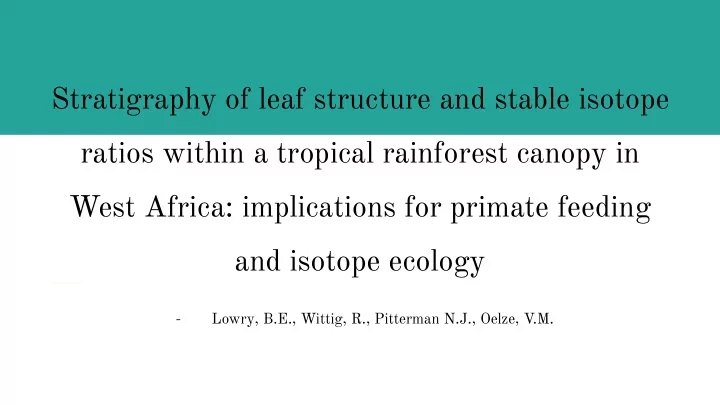

Stratigraphy of leaf structure and stable isotope ratios within a tropical rainforest canopy in West Africa: implications for primate feeding and isotope ecology - Lowry, B.E., Wittig, R., Pitterman N.J., Oelze, V .M.
Taï National Park, Ivory Coast
The Canopy Effect and Isotope Analysis δ X‰ = [(R sample / R standard ) – 1] x 10 3 δ 13 C = 13 C/ 12 C δ 15 N = 15 N/ 14 N δ 18 O = 18 O/ 16 O
Sympatric Primates Photos and Table pulled from Krigbaum et al. 2013
Measuring Leaf Mass Area (LMA) g/m 2
Results δ 13 C values become less negative with increasing height Significant correlation between increasing height and less negative δ 13 C values
Leaf Structure and Nitrogen Content
Implications for Primatology ● δ 13 C and δ 15 N values for plants of this forest can be matched with the values of primates to describe feeding height in the canopy. ● Leaf mass area (LMA) and nitrogen content heterogeneity in leaves could affect primate food selection and feeding height preference.
Conclusion ● Multidisciplinary studies let us monitor this forest as a dynamic system. ● Environmental fluctuations lead to changes in leaf nutrient content and structure, which affects animal feeding behavior. ● Long term isotopic values of leaves can reflect how plants are responding to fluctuations in humidity and temperature with time.
Recommend
More recommend